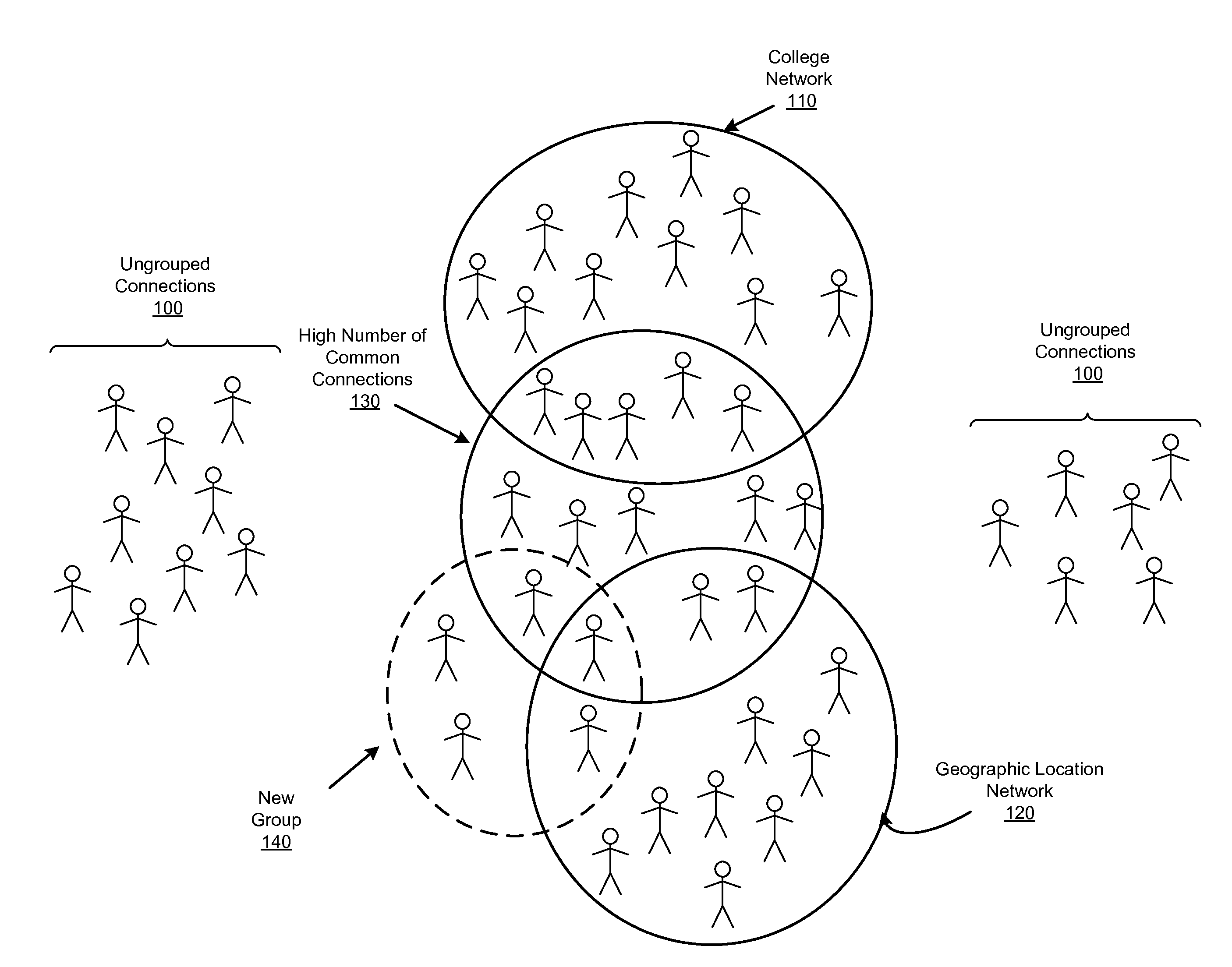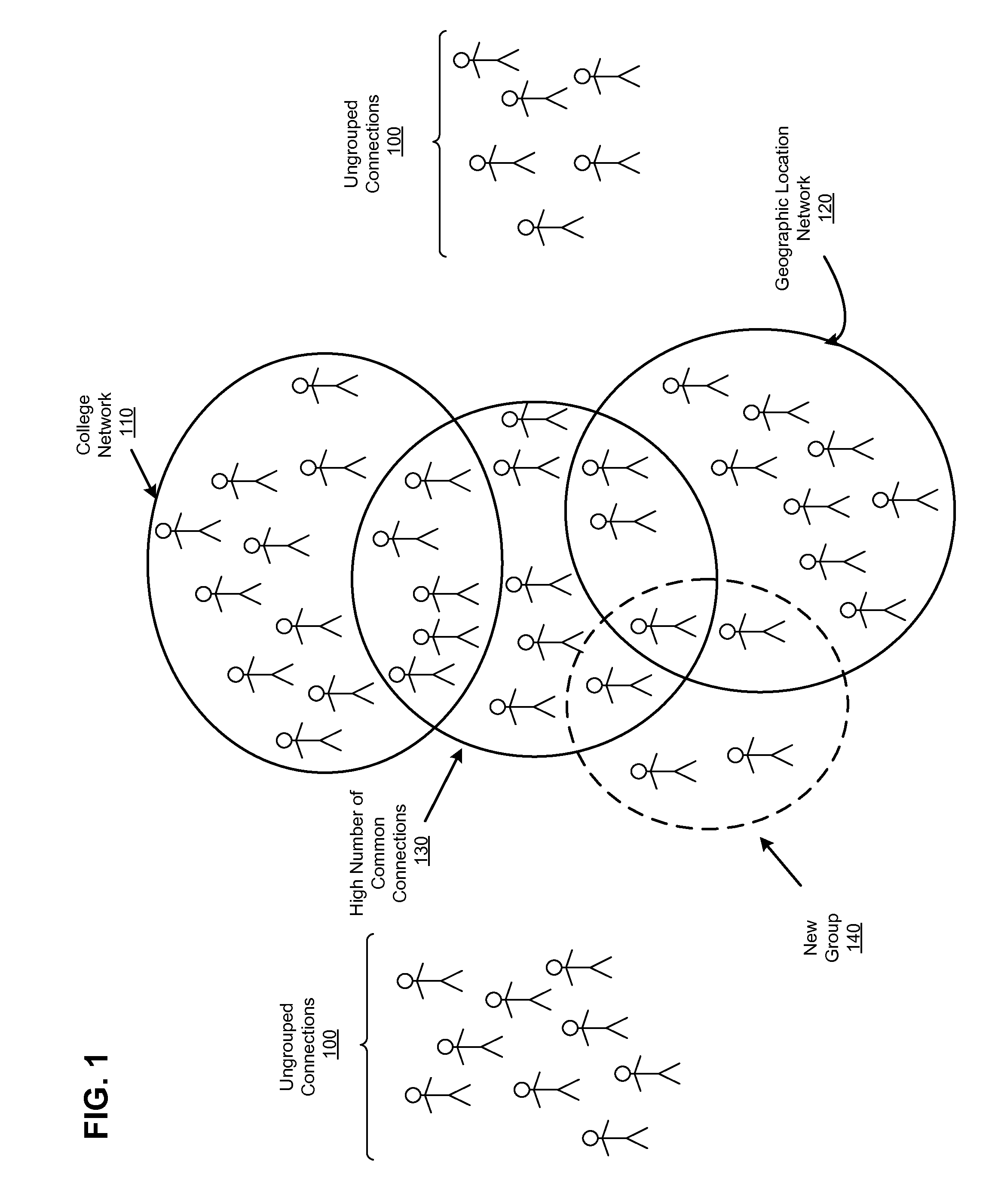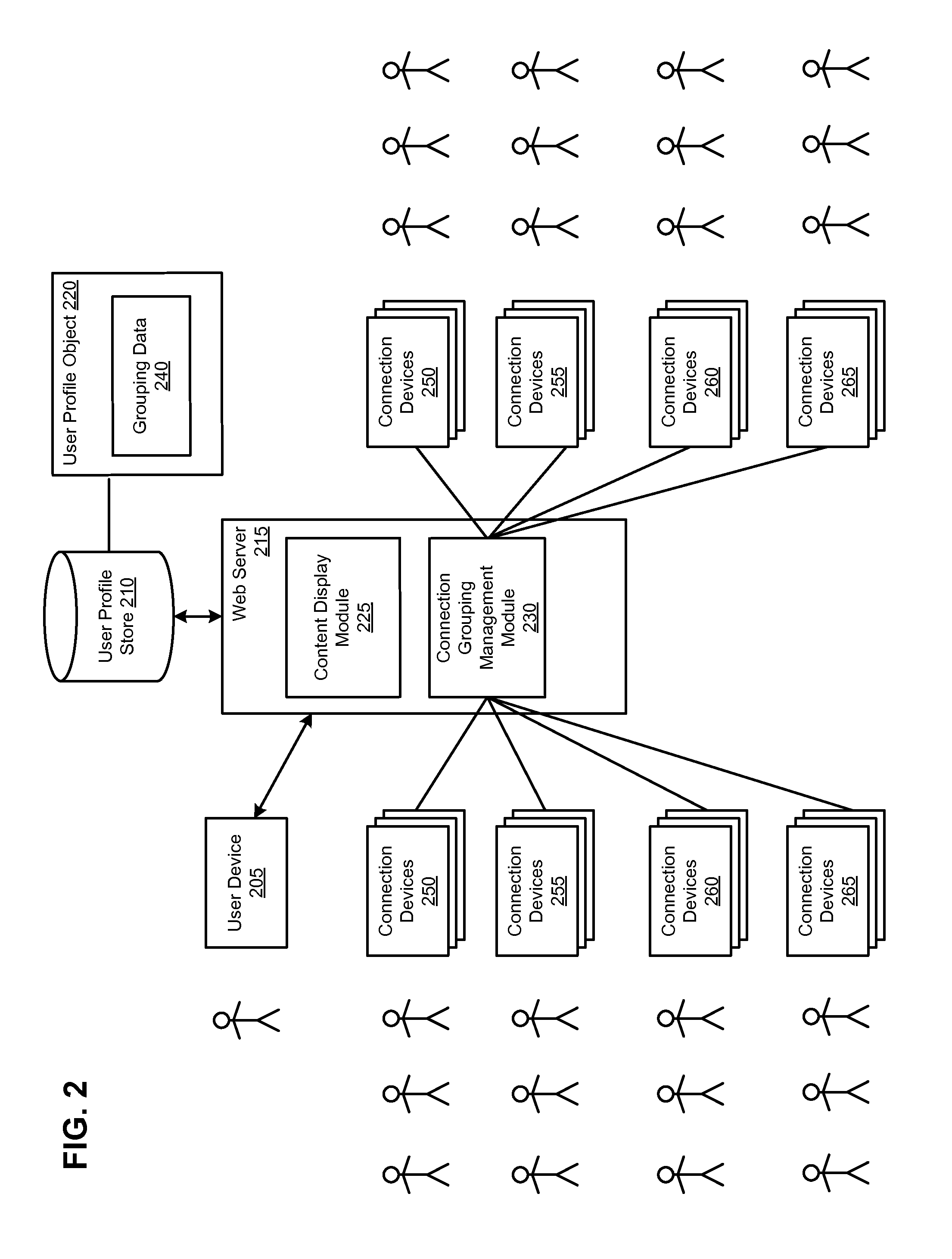Creating groups of users in a social networking system
a social networking system and user technology, applied in the field of social networking services, can solve the problems of low user experience, low user experience, and inability to create groups of users, and achieve the effect of improving the user experience of social networking services and predicting the desired group
- Summary
- Abstract
- Description
- Claims
- Application Information
AI Technical Summary
Benefits of technology
Problems solved by technology
Method used
Image
Examples
Embodiment Construction
Overview of a Social Networking System
[0012]A social networking system offers its users the ability to communicate and interact with other users of the social networking system. In use, users join the social networking system and then connect with other users, individuals, and entities to whom they desire to be connected. Connections may be added explicitly by a user, for example, the user selecting a particular other user to be a friend, or automatically created by the social networking system based on common characteristics of the users (e.g., users who are alumni of the same educational institution). Connections in social networking systems may be in both directions or may be in just one direction. For example, if Bob and Joe are both users and connect with each another, Bob and Joe are each connections of the other. If, on the other hand, Bob wishes to connect to Sam to view Sam's posted content items, but Sam does not choose to connect to Bob, a one-way connection may be formed...
PUM
 Login to View More
Login to View More Abstract
Description
Claims
Application Information
 Login to View More
Login to View More - R&D
- Intellectual Property
- Life Sciences
- Materials
- Tech Scout
- Unparalleled Data Quality
- Higher Quality Content
- 60% Fewer Hallucinations
Browse by: Latest US Patents, China's latest patents, Technical Efficacy Thesaurus, Application Domain, Technology Topic, Popular Technical Reports.
© 2025 PatSnap. All rights reserved.Legal|Privacy policy|Modern Slavery Act Transparency Statement|Sitemap|About US| Contact US: help@patsnap.com



